Wolf Species




Tundra Wolf
The Tundra Wolf (Canis lupus albus) is a subspecies of Grey Wolf that can be found throughout northern Europe and Asia, primarily in the northern arctic and boreal regions of Russia. Although Tundra Wolves were eliminated from some of the Arctic islands north of Siberia, they have been recently seen on Wrangle Island.



Arabian Wolf
The Arabian wolf (Canis lupus arabs) is a subspecies of gray wolf which was once found throughout the Arabian Peninsula, but now only lives in small pockets in Southern Israel, Southern and western Iraq, Oman, Yemen, Jordan, Saudi Arabia, and probably some parts of the Sinai Peninsula in Egypt.

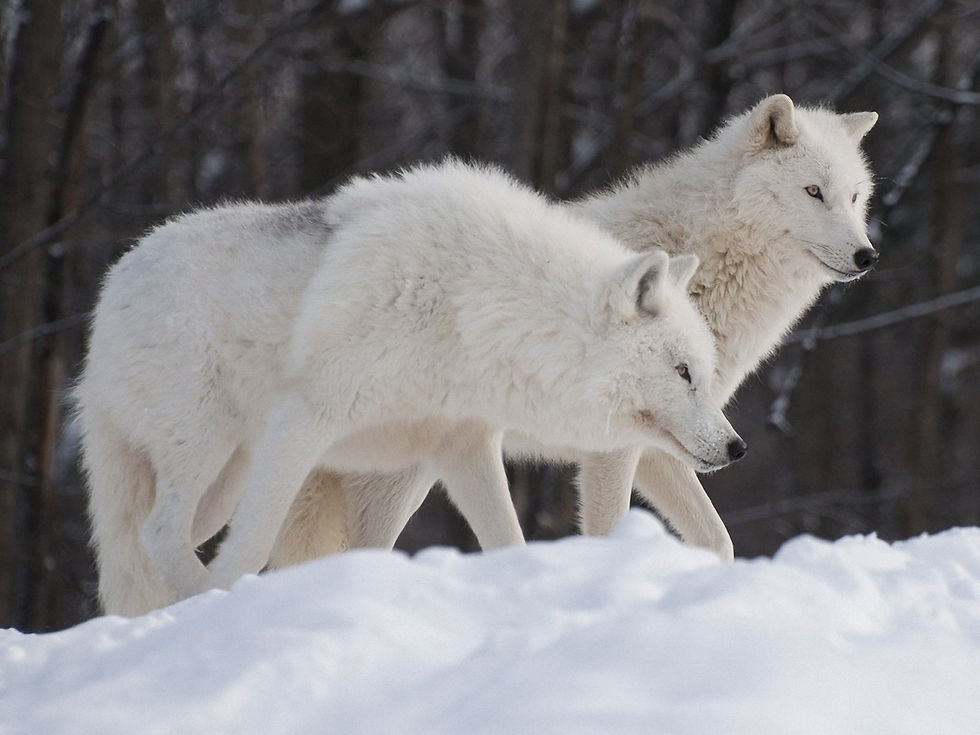

Arctic wolf
The Arctic wolf (Canis lupus arctos), also known as the Melville Island wolf is a possible subspecies of gray wolf native to the Canadian Arctic Archipelago, from Melville Island to Ellesmere Island. It is a medium-sized subspecies, distinguished from the northwestern wolf by its smaller size, its whiter coloration, its narrower braincase, and larger carnassials. Since 1930, there has been a progressive reduction in size in Arctic wolf skulls, which is likely the result of wolf-dog hybridization.




Mexican Wolf
The Mexican wolf (Canis lupus baileyi), also known as the lobo, is a subspecies of gray wolf native to the Sierra Madre and the surrounding area of western Mexico, though its range once included the southeastern United States. It is the smallest of North America's gray wolves, and is similar to C. l. nubilus, though it is distinguished by its smaller, narrower skull and its darker pelt, which is yellowish-gray and heavily clouded with black over the back and tail. Its ancestors were likely the first gray wolves to enter North America after the extinction of the Beringian wolf, as indicated by its southern range and basal physical and genetic characteristics
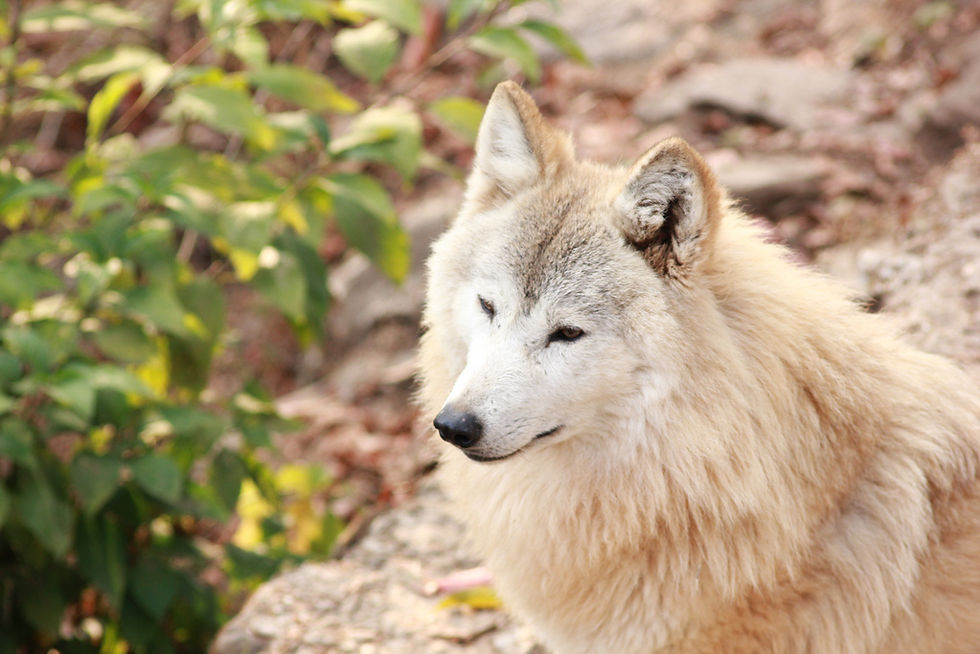



Tibetan Wolf
The Tibetan wolf (Canis lupus chanco), also known as the woolly wolf, is a gray wolf subspecies native to Asia from Turkestan throughout Tibet to Mongolia, northern China and the Indian subcontinent. In Tibet and Ladakh it is known as chánkú or shanko.
Canis lupus chanco is regarded as a synonym of Canis lupus lupus, reflecting a recent tendency to lump older subspecies and to name fewer new ones.



Eurasian Wolf
The Eurasian wolf (Canis lupus lupus), also known as the common wolf or Middle Russian forest wolf, is a subspecies of grey wolf native to Europe and the forest and steppe zones of the former Soviet Union. It was once widespread throughout Eurasia prior to the Middle Ages; aside from an extensive paleontological and genetic record, Indo-European languages typically have several words for 'wolf', thus attesting to the animal's abundance and cultural significance.


Steppe Wolf
The Steppe wolf (Canis lupus campestris) is a subspecies of grey wolf native to the Caspian steppes, the steppe regions of the Caucasus, the lower Volga region, southern Kazakhstan north to the middle of the Emba, the northern Urals, and the steppe regions of the lower European part of the former Soviet Union. It may also occur in northern Afghanistan and Iran and occasionally the steppe regions of Romania and Hungary.



Hokkaido Wolf
The Hokkaidō wolf, known in Japan as the Ezo wolf (エゾオオカミ(蝦夷狼) Ezo Ōkami?, Canis lupus hattai), is one of the two extinct subspecies of Canis lupus that have been called the Japanese wolf. The other is the Honshū wolf.
This endemic wolf of Japan occupied the island of Hokkaidō. The Hokkaidō wolf was larger than the Honshū wolf, more closely approaching the size of a regular gray wolf.



Honshu Wolf
The Honshū wolf (Canis lupus hodophilax), known in Japan as the Japanese wolf (ニホンオオカミ(日本狼) Nihon Ōkami?), yamainu (ヤマイヌ(豺、犲、山犬)?, "mountain dog"), or simply wolf (オオカミ(狼) Ōkami?), is one of the two extinct subspecies of the gray wolf once endemic to the islands of Japan. The Honshū wolf occupied the islands of Honshū, Shikoku, and Kyūshū in Japan. The other subspecies was the Hokkaidō wolf, native to the island of Hokkaidō.



Northern Rocky Mountains Wolf
The Northern Rocky Mountains wolf (Canis lupus irremotus, also known as the Northern Rocky Mountain wolf, is a possible subspecies of gray wolf native to the northern Rocky Mountains and the high adjoining plains, from northwestern Wyoming northward through western Montana and eastern Idaho at least to Lethbridge in southern Alberta. It is a light-colored, medium to large-sized subspecies with a narrow, flattened frontal bone.
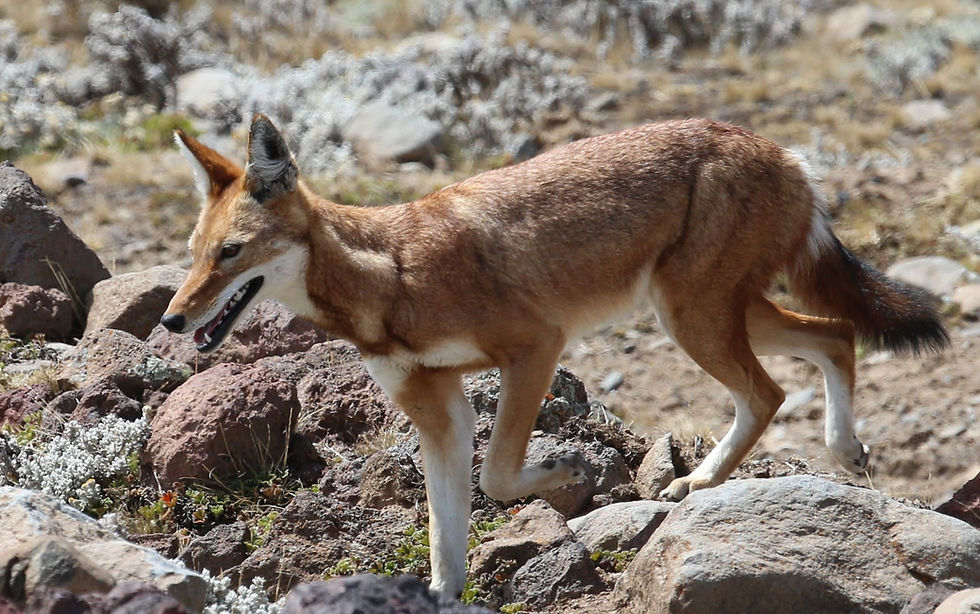



Egyptian Wolf
The Egyptian wolf, formerly known as the Egyptian jackal, is a canid of unresolved taxonomic identity native to northern, eastern and western Africa. Throughout much of the 20th century, the animal was classed as a subspecies of golden jackal, Canis aureus lupaster. Notice was however taken by numerous zoologists of the animal's morphology, which corresponds more to that of the grey wolf. This was corroborated through mtDNA studies, which initially indicated that the animal was a subspecies of grey wolf, and should be renamed African wolf (Canis lupus lupaster).

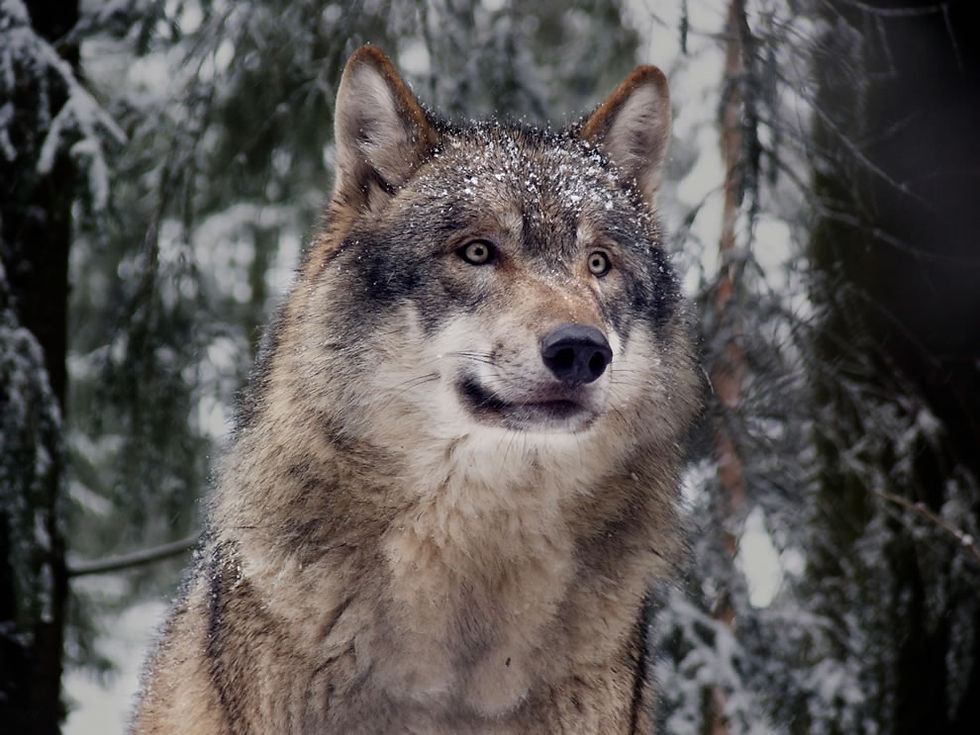


Eurasian Wolf
The Eurasian wolf (Canis lupus lupus), also known as the common wolf or Middle Russian forest wolf, is a subspecies of grey wolf native to Europe and the forest and steppe zones of the former Soviet Union. It was once widespread throughout Eurasia prior to the Middle Ages; aside from an extensive paleontological and genetic record, Indo-European languages typically have several words for 'wolf', thus attesting to the animal's abundance and cultural significance. It was held in high regard in Baltic, Celtic, Slavic, Turkic, Ancient Greek, Roman, and Thracian cultures, whilst having an ambivalent reputation in early Germanic cultures.
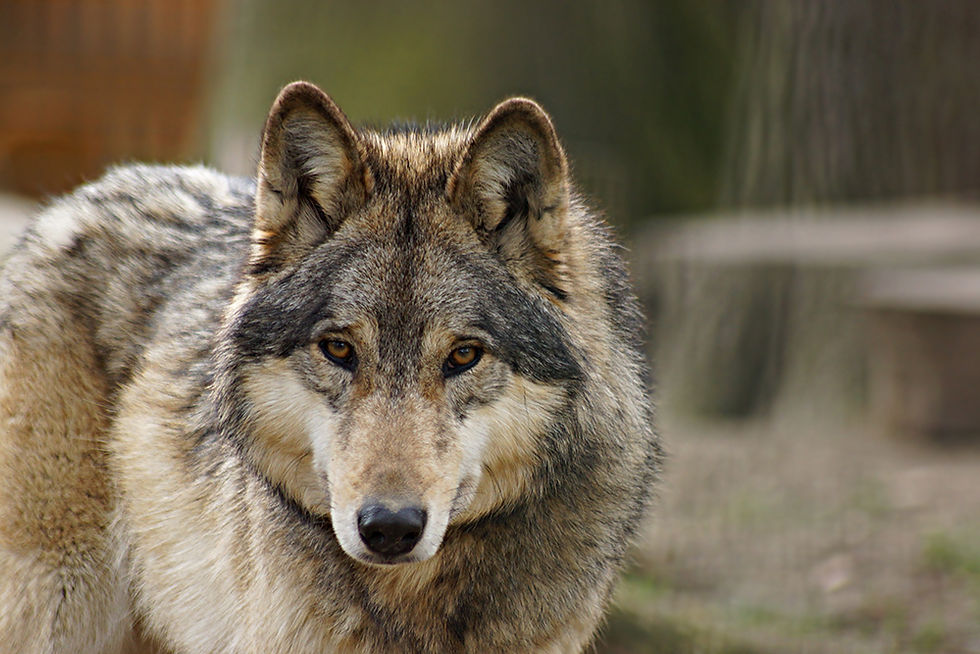


Eastern Wolf
The eastern wolf (Canis lycaon, formerly Canis lupus lycaon), also known as the eastern timber wolf, Algonquin wolf or deer wolf is a canid native to the northeastern side of North America's Great Lakes region. It is a medium-sized canid which, like the red wolf, is intermediate in size between the coyote and Northwestern wolf. It primarily preys on white-tailed deer, but may occasionally attack moose and beaver.



Great Plains Wolf
The Great Plains wolf (Canis lupus nubilus), also known as the buffalo wolf, dusky wolf or loafer, is a subspecies of gray wolf whose range once extended throughout the Great Plains from southern Manitoba and Saskatchewan southward to northern Texas. It is a medium-sized subspecies of variable color, with most specimens being light colored, though black individuals do occur. Adult males typically weigh 100 lb (45 kg), though exceptionally large individuals weighing 150 lb (68 kg) have been recorded. Along with C. l. occidentalis, with which it shares a long and complex border, the Great Plains wolf is the most widely spread North American gray wolf, with at least 11 different synonyms.



Northwestern Wolf
The northwestern wolf, Canis lupus occidentalis, also known as the Mackenzie Valley wolf or northern timber wolf is a subspecies of gray wolf in western North America. It ranges from the upper Mackenzie River Valley, southward into central Alberta. Along with C. l. nubilus, C. l. occidentalis is the most widespread member of the five gray wolf subspecies in North America, with at least six different synonyms.



Indian Wolf
The Indian wolf (Canis lupus pallipes) is a subspecies of grey wolf which ranges from Israel to the Indian Subcontinent. It is intermediate in size between the Tibetan and Arabian wolf, and lacks the former's luxuriant winter coat. Two closely related haplotypes within this subspecies have been found basal to all other extant Canis lupus haplotypes apart from the older-lineage Himalayan wolf, and have been proposed as a separate species.
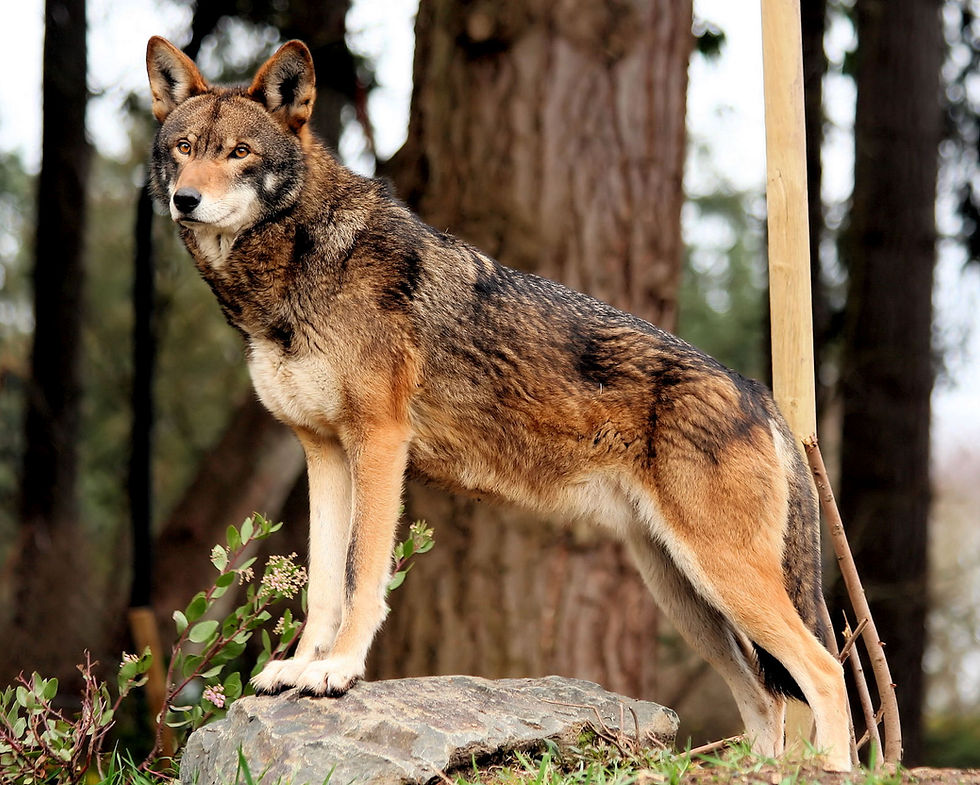


Red Wolf
The red wolf (Canis rufus/Canis lupus rufus), also known as the Florida wolf or Mississippi Valley wolf is a canid of unresolved taxonomic identity native to the eastern United States. It is generally, morphologically, an intermediate between the coyote and gray wolf, and is of a reddish, tawny color.



Himalayan Wolf
The Himalayan wolf (Canis lupus chanco, synonym Canis himalayensis) is basal to all extant Canis lupus subspecies. It has been suggested by several Indian biologists for recognition as a Critically Endangered canid species. Although the Indian government added the Himalayan wolf to the Endangered Species List in 1998, it still lacks legal protection in Tibet.



Italian Wolf
The Italian wolf (Canis lupus italicus) is a subspecies of grey wolf native to the Italian Peninsula. It inhabits the mountainous areas of the Apennines and western Alps, though it is undergoing expansion towards the north and east. As of 2005, the Italian wolf population is estimated to consist of 500 individuals. It has been strictly protected in Italy since the 1970s, when the population reached a low of 70–100 individuals. The population is increasing in number, though illegal hunting and persecution still constitute a threat. Since the 1990s, the Italian wolf's range has expanded into southwestern France and Switzerland. Although not universally recognised as a distinct subspecies, it nonetheless possesses a unique mtDNA haplotype and a distinct skull morphology.